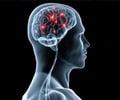According to a TAU researcher, neurons in the nose could be the key to early, fast, and accurate diagnosis of the debilitating mental illness, schizophrenia.

Now, Dr. Noam Shomron and Prof. Ruth Navon of Tel Aviv University's Sackler Faculty of Medicine, together with PhD student Eyal Mor from Dr. Shomron's lab and Prof. Akira Sawa of Johns Hopkins Hospital in Baltimore, Maryland, have discovered a method for physical diagnosis - by collecting tissue from the nose through a simple biopsy.
Surprisingly, collecting and sequencing neurons from the nose may lead to "more sure-fire" diagnostic capabilities than ever before, Dr. Shomron said.
This finding could not only lead to a more accurate diagnosis, it may also permit the crucial, early detection of the disease, giving rise to vastly improved treatment overall.
Until now, biomarkers for schizophrenia had only been found in the neuron cells of the brain, which can't be collected before death. By that point it's obviously too late to do the patient any good, said Dr. Shomron.
Instead, psychiatrists depend on psychological evaluations for diagnosis, including interviews with the patient and reports by family and friends.
Advertisement
Dr. Shomron and his fellow researchers applied a high-throughput technology to these samples, studying the microRNA of the olfactory neurons. Within these molecules, which help to regulate our genetic code, they were able to identify a microRNA, which is highly elevated in those with schizophrenia, compared to individuals who do not have the disease.
Advertisement
In practice, material for biopsy could be collected through a quick and easy outpatient procedure, using a local anesthetic, said Dr. Shomron. And with microRNA profiling results ready in a matter of hours, this method could evolve into a relatively simple and accurate test to diagnose a very complicated illness.
Though there is much more to investigate, Dr. Shomron has high hopes for this diagnostic method.
This finding was reported in the journal Neurobiology of Disease.
Source-ANI














